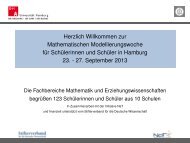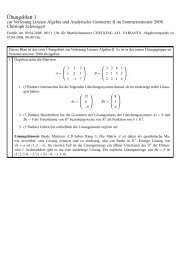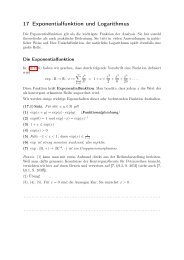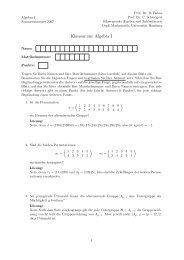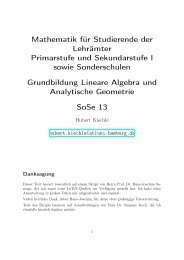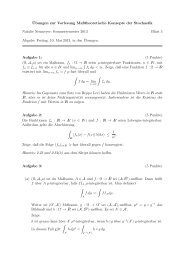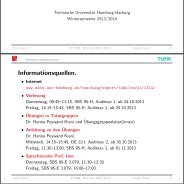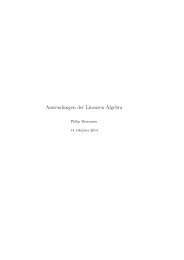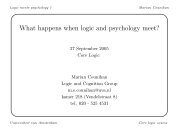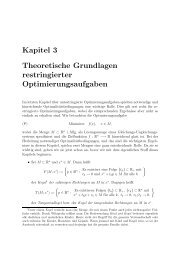pdf file
pdf file
pdf file
Create successful ePaper yourself
Turn your PDF publications into a flip-book with our unique Google optimized e-Paper software.
Proof.<br />
We show the following statements by graphical calculations:<br />
• The above definition indeed defines H-coactions on V ∗ .<br />
• The coaction defined with S −1 has the property that the right evaluation and right coevaluation<br />
are morphisms of H-comodules. The statement that the coaction defined with<br />
S on the left dual is compatible with left evaluation and coevaluation follows in complete<br />
analogy.<br />
• The left and right dual actions and coactions obey the Yetter-Drinfeld axiom.<br />
This raises the question whether for any given Hopf algebra H the category H HYD can be<br />
seen as the category of left modules over a quasi-triangular Hopf algebra D(H).<br />
Observation 4.5.6.<br />
1. To investigate this in more detail, assume that the Hopf algebra H is finite-dimensional<br />
and recall from example 2.2.8.1 that a coaction of H then amounts to an action of H ∗ .<br />
Thus the quasi-triangular Hopf algebra D(H) should account for an action of H and H ∗ .<br />
If the two actions would commute, H ∗ ⊗ H with the product structure for algebra and<br />
coalgebra would be an obvious candidate. This is not the case, and we have to encode the<br />
Yetter-Drinfeld condition in the product on D(H).<br />
2. It will be convenient to consider a slightly different category H YD H of Yetter-Drinfeld<br />
modules: these are triples (V, ρ V , Δ V ) such that<br />
• (V, ρ V ) is a unital left A-module.<br />
• (V, Δ V ) is a counital right A-comodule:<br />
Δ V : V → V ⊗ H<br />
v ↦→ v (V ) ⊗ v (H)<br />
• The Yetter-Drinfeld condition holds in the form<br />
h (1) .v (V ) ⊗ h (2) ∙ v (H) = (h (2) .v) (V ) ⊗ (h (2) .v) (H) ∙ h (1) .<br />
Morphisms of Yetter-Drinfeld modules in H YD H are morphisms of left modules and right<br />
comodules.<br />
This observation leads to the following definition:<br />
Definition 4.5.7<br />
Let H be a finite-dimensional Hopf algebra. Endow the vector space D(H) := H ∗ ⊗ H<br />
• with the structure of a counital coalgebra using the tensor product structure, i.e. for<br />
f ∈ H ∗ and a ∈ H, we have<br />
ɛ(f ⊗ a) := ɛ(a)f(1)<br />
Δ(f ⊗ a) := (f (1) ⊗ a (1) ) ⊗ (f (2) ⊗ a (2) )<br />
This encodes the fact that the tensor product of Yetter-Drinfeld modules is the ordinary<br />
tensor product of modules and comodules.<br />
108<br />
✷




